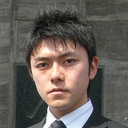Lamotrigine monotherapy for newly diagnosed typical absence seizures in children: A multi-center, uncontrolled, open-label study.
Słowa kluczowe
Abstrakcyjny
OBJECTIVE
To evaluate the efficacy and safety of lamotrigine (LTG) monotherapy for treating Japanese and South Korean pediatric patients with newly diagnosed typical absence seizures.
METHODS
Twenty patients with newly diagnosed typical absence seizures aged 4-12 years were enrolled in the study and were administered LTG at an initial dose of 0.3 mg/kg/day for 2 weeks, followed by 0.6 mg/kg/day for an additional 2 weeks. Thereafter, the dose was increased by 0.6 mg/kg/day up to a maximum of 10.2 mg/kg/day or 400 mg/day (whichever was the lower dose) until patients were confirmed to be seizure free induced by hyperventilation (HV). After confirmation, the dose was increased by one level (0.6 mg/kg/day). If the patient was found to be seizure free by HV-electroencephalography (EEG) on the following two consecutive visits, the patient entered the 12-week maintenance phase. After the maintenance phase, patients could enter the extension phase if clinically indicated.
RESULTS
The seizure-free rate confirmed by HV-EEG at the end of the maintenance phase was 35.0% (7/20 patients). Most of patients who were confirmed to be seizure free during the escalation phase had maintained seizure control during the 12-week maintenance phase and the 12-week extension phase. The most frequently noted adverse events were bronchitis, headache, and rash (20% each). No serious adverse events were reported.
CONCLUSIONS
Lamotrigine monotherapy in Japanese and South Korean children with typical absence seizures was well tolerated and 35.0% of patients were seizure free at the end of maintenance phase.


